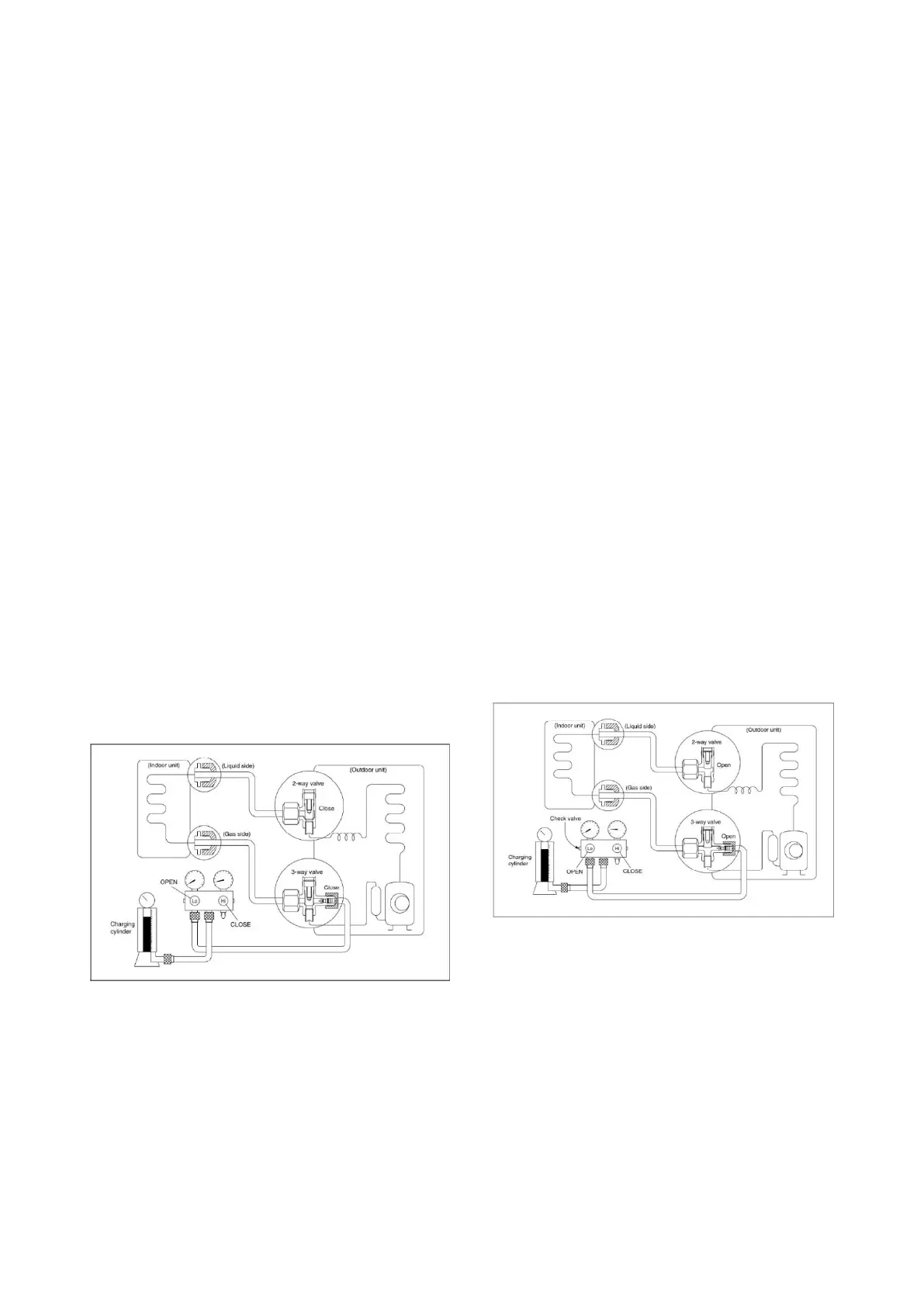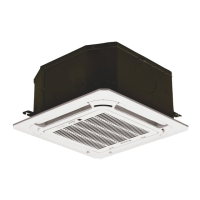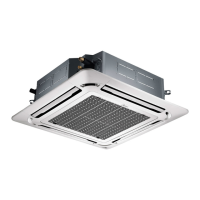4) Fully open the Handle Lo of the manifold
valve.
5) Turn on the vacuum pump to begin
evacuation.
6) Conduct a 30-minute evacuation. Check
whether the compound meter indicates
-0.1Mpa(14.5Psi). If the meter does not
indicate -0.1Mpa(14.5Psi) after 30 minutes
has elapsed, continue evacuation for 20
more minutes. If the pressure does not
reach -0.1Mpa(14.5Psi) after 50 minutes
has elapsed, check if there are any leaks.
Fully close the Handle Lo valve of the manifold
valve and turn off the vacuum pump. After 5
minutes, confirm that the gauge needle is not
moving.
7) Turn the flare nut on the 3-way valve45°
counterclockwise for 6-7 seconds. Once
gas begins to come out, tighten the flare nut.
Make sure the pressure display on the
pressure indicator is higher than
atmospheric pressure. Then remove the
charge hose from the 3-way valve.
8) Fully open the 2-wayand 3-way valves and
securely tighten the cap on the 3-way valve.
2. Air Purging Using Refrigerant
Procedure:
1). Confirm that both the 2-way and 3-way
valves are set to the closed position.
2). Connect the charge set and a charging
cylinder to the service port on the 3-way valve.
3). Air purging:
Open the valves on the charging cylinder and
the charge set. Loosen the flare nut on the
2-way valve approximately 45° for 3 seconds
then closing it for 1 minute. Repeat 3 times.
After purging the air, use a torque wrench to
tighten the flare nut on the 2-way valve.
4). Check for gas leaks.
Check the flare connections for gas leaks.
5). Discharge the refrigerant.
Close the valve on the charging cylinder and
discharge the refrigerant by loosening the flare
nut on the 2-way valve approximately 45° until
the gauge displays a value between 0.3 to 0.5
Mpa(43.5 to 72.5Psi)
6). Disconnect the charge set and the charging
cylinder. Set the 2-way and 3-way valves to the
open position.
Be sure to use a hexagonal wrench to open and
close the valve stems.
7). Mount the valve stems nuts and the service
port cap.
Be sure to use a torque wrench to tighten the
service port cap to a torque of 18N·m.
Be sure to check for gas leaks.
14.4.4 Adding Refrigerant after Long-Term
System Operation
Procedure
1). Connect the charge hose to the 3-way
service port and open the 2-way and 3-way
valve.
Connect the charge hose to the valve at the
bottom of the cylinder. If the refrigerant is
R410A, place the cylinder bottom-up to ensure
liquid charge.
2). Purge the air from the charge hose.
Open the valve at the bottom of the cylinder
and press the check valve on the charge set to

